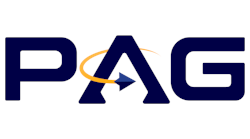Insurance coverage for your leased or rented space (premises liability) is not a new concept. Most hangar/tie-down agreements require anyone owning, leasing, or operating on an airport to carry liability insurance for the tenant's negligence. These agreements/contracts refer to coverages such as general liability, public liability, premises liability, and owners-landlords- tenants liability. Although there are some slight differences between the various forms of liability insurance, they are usually referring to the same basic type of coverage. It is certainly reasonable for you to be held responsible for your own negligent actions. However, some of these agreements go beyond the point of fairness between the signing parties (i.e., the insured).
There may be clauses inserted into the agreement/contract that pass all responsibility to the lessee, regardless of the negligent party. Some of these clauses include: blanket hold harmless, indemnification, and breach of warranty. If there is any question or doubt about the language in the agreement/contract send it to your insurance broker and attorney before signing.
A reasonable contract will ask you to provide coverage for your own negligent acts; these limits and coverages are readily available and typically very affordable. In many cases, your existing aircraft or hangar insurance policy can be endorsed to include premises liability at no additional charge or for minimal premium increase. A stand-alone general liability policy premium can range $750 to $2,000 or more. Before purchasing a separate policy, make sure you ask your broker about all the options:
• Check your current policies (you may already have this coverage)
• Endorse your current aircraft or hangar property policy to add premises liability
If, as a last resort, you must purchase a separate general liability policy, be certain your broker is appointed with all the aviation underwriting companies, not just a few. Ask for a list of underwriters they obtained quotes from. If they won’t provide this information to you, find a broker that will work in your best interest.
No Clause
If the agreement does not contain an indemnification or hold harmless clause do you still need premises liability coverage? Yes – because the liability exposure still exists. Some refer to this exposure as “slip-and-fall,” but it really refers to more than that. An insurance policy defines premises liability “as any bodily injury or property damage occurring on a portion of the airport you occupy.” This occupation can be through written or verbal agreement.
For example, let’s assume you lease hangar space where you perform maintenance for customers’ airplanes (oil changes, 100 hours, annuals, etc.). At times, your customers stop by to see the progress on their airplane. If they trip over an extension cord you have on the floor and suffer a severe head injury, their injury would fall under the “bodily injury” portion of premises liability. If you do not have premises liability coverage, they may file suit against your business and/or you personally to recover damages.
Best Practice
The best practice is to contact your aviation insurance broker and discuss your specific situation with them. Have them review agreements for clauses that need to be addressed by an insurance policy. Ask them to add the premises liability coverage, or provide a quote for this coverage even if the agreement doesn’t require it. Your business will thank you.



